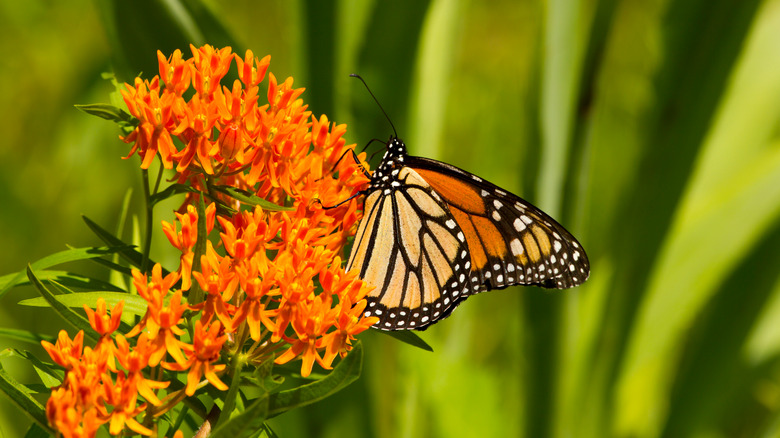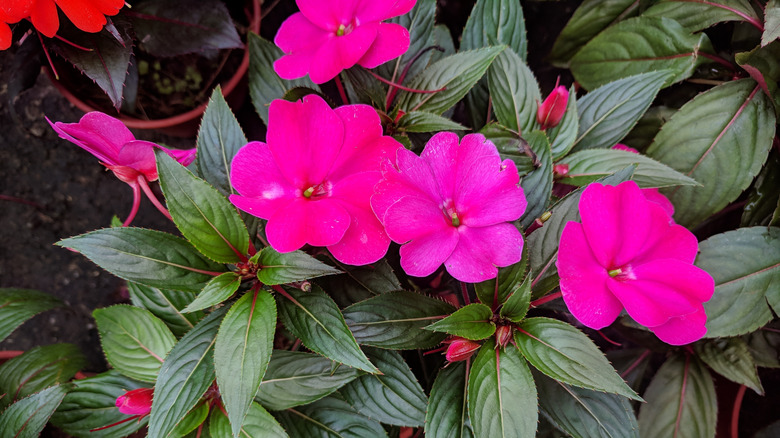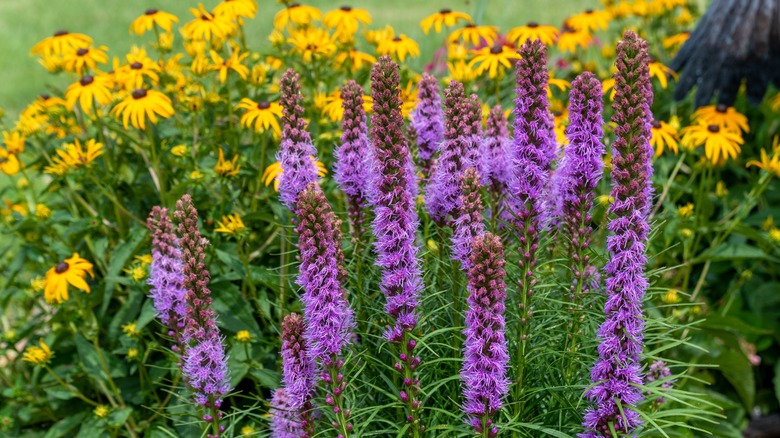Don't Plant This Flower Next To Butterfly Weed In Your Pollinator Garden
Pollinator gardens contain a variety of plants that attract bees, butterflies, birds, and other beneficial insects. Not only can these habitats beautify your outdoor space, but they are also vital for increasing biodiversity and helping to control pests. Choosing a diverse mix of plants is important to attract a range of pollinators and provide a continuous food source throughout spring, summer, and fall. However, there are some pollinating plants that shouldn't grow next to each other. While butterfly weed (Asclepias tuberosa) and impatiens (Impatiens spp.) are pollinator-friendly species, their opposite growing requirements make them incompatible when planted together.
Butterfly weed is a flowering perennial that is attractive to many pollinators, including butterflies, hummingbirds, and bees. This native wildflower reaches 1 to 3 feet tall and blooms clusters of orange to yellow flowers from June through August. Impatiens are popular bedding plants that attract bees and butterflies. In shades of red, orange, white, or pink, the flowers are in bloom from spring through fall, depending on the species.
Why you shouldn't plant impatiens with butterfly weed
When it comes to selecting the best plants to grow together, it is essential to consider the care and environmental requirements of each species. Two plants grown alongside one another in a garden bed will share soil, sun exposure, nutrition, and moisture. By grouping plants with similar care needs, you can ensure that the optimal conditions are met for all species.
Butterfly weed prefers sandy, well-draining soil, is extremely drought tolerant, and does best in a location that receives full to partial sun. Contrastingly, impatiens are moisture-loving flowers that grow perfectly in shade. In the dry and sunny habitat that suits butterfly weed, impatiens may wilt and fail to bloom. Note that some impatiens New Guinea hybrids have been bred to tolerate more sun, although they should still not be planted in full sun exposure. In the moist and shady conditions preferred by impatiens, butterfly weed will produce fewer flowers and may be prone to root rot.
Suitable companion plants for your pollinator garden
Butterfly weed grows well as part of naturalized and prairie plantings with other drought-tolerant species. Thread leaf coreopsis (Coreopsis verticillata) is a native perennial in the Asteraceae family that prefers sandy, rocky soils and plenty of sun. The golden yellow, daisy-like flowers are in bloom from spring to summer and are known to attract bees, butterflies, and songbirds. Alongside butterfly weed and coreopsis, consider planting sun-loving black-eyed Susans (Rudbeckia hirta). The black and yellow composite flower heads attract a range of small to medium-sized pollinators and beneficial insects. To add variety to your prairie pollinator garden, include the flowering perennial blazing star (Liatris spp.). The tall spikes of lilac flowers bloom in late summer, attracting bees and butterflies.
If you have a shadier environment with moist soil, start a pollinator garden with impatiens and other moisture-loving species. Blue lobelia (Lobelia siphilitica) is a late-flowering perennial that prefers medium to wet soil. Although this species can be grown in full sun, it is also happy in the partial shade preferred by impatiens, and the blue to purple flower spikes are highly attractive to a variety of bees. Add azaleas (Rhododendron spp.) for early blooms and bleeding hearts (Dicentra spectabilis) for late spring flowers. Azalea's tubular or funnel-shaped flowers attract bees and hummingbirds, while bleeding heart's pendant-shaped blooms attract bees, butterflies, hummingbirds, and songbirds.


